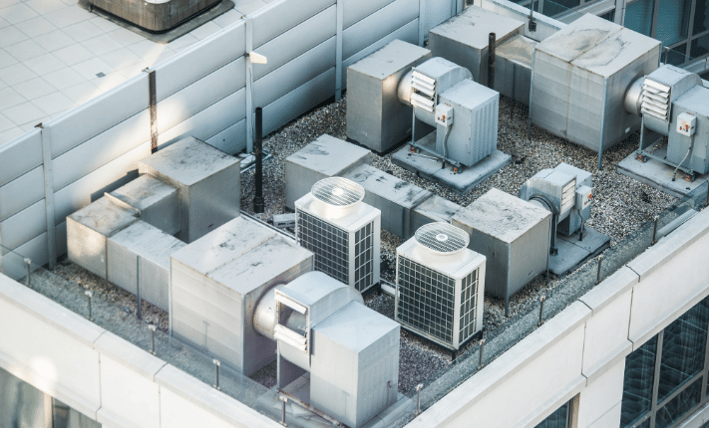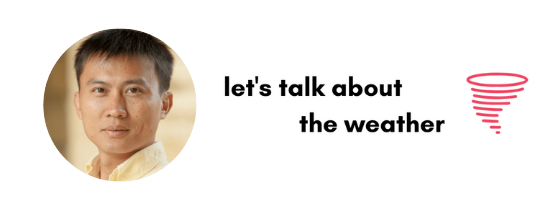Posted by Weatherflow ● August, 2021
Tempest News | August 2021

Are we too reliant on air conditioning?
Professor Eric Dean Wilson at Queens College in New York teaches climate-themed writing and environmental justice. He has also spent the last six years researching the history and effects of artificial cooling methods on our environment, with his findings begging us to ask the question: are we too reliant on air-conditioning? Read More >>>
the Oregon wildfire is creating its own weather
Oregon’s Bootleg fire has burned over 600 square miles in southern Oregon since early July and is the third-largest wildfire in the state’s history. Fueled by prolonged drought in the area along with excessively high temperatures, the Bootleg fire has spread so rapidly that it is causing the formation of pyrocumulus clouds, which only form in wildfire conditions. Read More >>>
EXTREME HEAT COULD CAUSE POWER AND WATER SHORTAGES
With over 75 million people living under drought conditions and a quarter of the country described as experiencing an extreme or extraordinary drought, experts urge areas of the Southwest to prepare for electricity and water shortages. Factors like infrequent rainfall and already low water levels cause growing concern from experts on hydropower availability in states like California. Read More >>>

...with Professor Yi Cui, a materials scientist often described as one of the most influential scientific minds working on climate solutions.
Professor Yi Cui serves as director for the Precourt Institute for Energy, where he applies nanotechnology to solve environmental problems around water, air pollution, grid-scale energy storage, and smart wearable textiles. With rising temperatures across the globe causing distress and record heat-related deaths, Tempest reached out to Professor Cui to talk about innovation on the horizon that can manage our body's adaptation to extreme temperatures.
Q: Thanks for talking about the weather with us today, Professor Cui. You went to school on the East Coast, and now you are at Stanford. How do you find West Coast living?
A: I did my postdoc at Berkeley and fell in love with California and the weather here. I looked everywhere for a professor job so I could stay!
Q: How do you like the weather now? fires, air pollution, earthquakes...
A: I have been at Stanford for 16 years and am working on some of the biggest climate problems in the world. I guess I'm using my life as an experiment to experience natural disaster-related events! But wildfires are becoming more frequent, and this is a climate change issue. Last year was terrible during the day - you didn't see the sun, only a red-colored sky. You can't imagine how scary it was. Air pollution was awful, which is also something I'm trying to solve.
Q: Tell US about your work at the Precourt Institute.
A: First, carbon emissions are huge. One-third comes from electricity and another third from transportation. Building energy consumption is another 13%. So if you want to decarbonize the whole economy, we need to look at what has a high impact and global scale. You've got to work on the right problem, and we are working mainly on energy and decarbonizing the electric grid using solar. We are inventing new types of batteries and storage, new types of textiles to cool and warm the human body and save building's energy consumption.
Q: How do you get these ideas out in the real world?
A: By now, I've started five companies. The first one was amprius, a high-energy lithium battery. The second, 4CAir, is air filtration that removes particles from the air. During Covid, 4CAir had the best n95 masks with fantastic breathability and the only N95 version for children.
I've had so many inventions over the past years. If I start one company now, it will be too slow to get out to market, so I've set up my own technology accelerator company to accelerate multiple technologies simultaneously. I really enjoy doing this and can see the impact.
Q: How are you solving for extreme temperatures in your lab?
A: I have applied nanotechnology to materials science, and we have developed new clothing that warms and cools the human body. Ultimately, it will save a lot of energy - in terms of air conditioning and heating.
Q: Will you explain how your technology-driven materials work to heat or cool the human body?
A: Human body temperature is 37 degrees C /98.6 F. Our body naturally radiates out MIR (mid-infrared radiation). To keep the body warm, you want to prevent radiation from going out. To cool, you want to get that radiation out.
My lab invented a new type of fabric that lets MIR from the human body pass directly through it, cooling by about 3° C. If you feel cooler, this material will allow you to turn down the AC by 3 degrees, saving 30% of energy. In winter, we can save another 30-40% by keeping you warmer so you can turn the heat down. This is how we want to change the world.
Q: Where can you get this fabric?!
A: I just formed a new company Life Lab Design. We have a website launching soon, and this is going to save lives. Our key is using both science and design. Last week we closed our Series A financing, and we hired a superstar from North Face and are building out the team. The goal is to minimize the use of AC and expand the temperature range you live in and feel comfortable in.
Q: What other applications would you use this clothing for?
A: Now, people can wear clothing to moderate their temperature. We are thinking of building a house that can wear clothing. Think of wallpaper - on the inside or outside that saves further energy? We are working on that, and that will probably be its own start-up.
Q: How do you find time to teach, invent and start companies? And What's next?
A: I want to get more people to work in this space of sustainability. I have been educating a lot of Ph.D. students, and I have now more than 70 professors around the world working on sustainability issues. Usually, professors like doing science and inventing tech in a university lab. I'm interested in doing that and then also making it a scalable solution.
As for what's next, water filtration is looking very exciting. EEnotech is a water filtration technology that disinfects bacteria and metals to make water safe for drinking. And Amprius will have an IPO this year. We are just going step by step!

Back to: Newsletter
